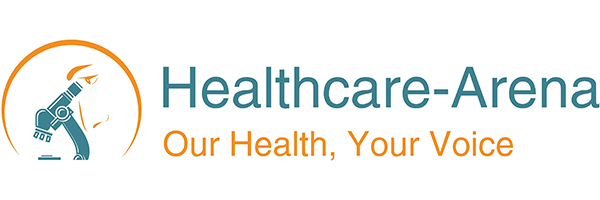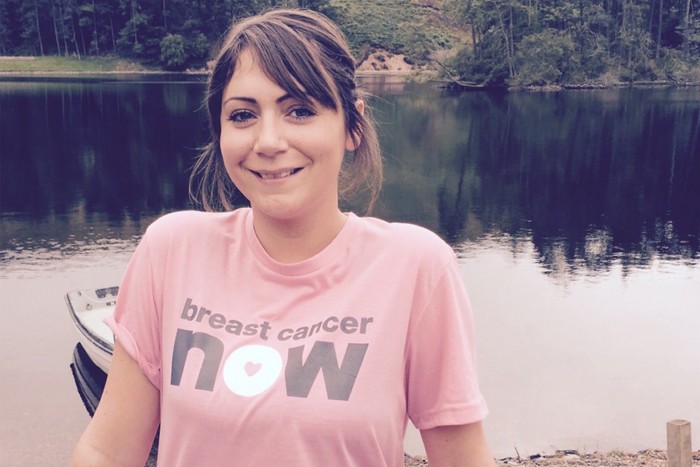Why you should donate your tumour to research
Share this article:
It can happen with terrifying speed. From a breast lump to the chemo ward with the empty feeling that your whole personality has been stripped from you.
Victoria Docherty is a cancer survivor and recently appointed ambassador for Breast Cancer Now, the UK’s largest breast cancer charity. She faced the appalling prospect of being diagnosed with breast cancer at the early age of 24 and having her life thrown into chaos as a result.
But her story provides a very helpful moral and one that she intends to use in her ambassadorial role. The key thing is early diagnosis, and this is one of her messages when talking to groups of young women. Conventional thinking is that breast cancer doesn’t strike until women are in their 50s, so although all cases are taken very seriously, Victoria’s doctors thought it was unlikely that this was breast cancer. Fortunately they decided to make sure and biopsied the lump; when the resulting MRI and mammogram proved positive for breast cancer her whole life changed in an instant.
Victoria was, in a sense, lucky because she had an HER2-positive tumour, which meant that she could be treated with trastuzumab (Herceptin) after the initial tumour removal but, as Victoria explained to Healthcare Arena, only about one in five breast cancers are HER2-positive: “I had the benefit of a treatment that works well with my type of cancer, but diagnosis is critical. There are more than 20 different types of breast cancer and so there cannot be the same treatment for all tumours – more research is essential.”
Victoria is very grateful that her treatment took place at the breast cancer unit at the Western General Hospital in Edinburgh under the inspiring leadership of Professor Mike Dixon.
The diagnosis itself was only the first stage of Victoria’s journey. As a young woman just diagnosed with breast cancer, she had expected that her main concern would be the treatment but instead she first had to make some hard decisions, particularly being advised: “if you ever want children, you’re going to have to do something about it now”. The consequence was that, after discussions with her partner Jamie Munro, Victoria underwent an urgent – and ultimately successful – course of fertility treatment and there are now three frozen embryos waiting for the right moment.
Chemotherapy and radiotherapy followed with the associated highs and lows but Victoria has fought through these stages and is now rebuilding her life. However, she was so grateful for the support she received, especially from Mike Dixon and his team that she decided that she wanted to give something back.
Ambassador for Breast Cancer Now
It was during her radiotherapy treatment that Victoria decided to visit ‘Breakthrough’ as it was then known, one of the two charities that recently came together to form Breast Cancer Now. The charity was interested in her story and wanted to make use of it to promote Professor Mike Dixon’s own fund-raising efforts. As a result of her involvement, the charity received some great feedback and Victoria was invited to become an ambassador for Breast Cancer Now.
She uses her role as an ambassador to tell her story and to raise money for the charity. She is also enthusiastic about talking to girls of high school age. She explains that it makes her very angry when younger girls are not told about breast cancer, the risks, what to look for and what to do if they find a lump. She believes that all girls should be taught how to check their breasts as soon as they have been through puberty, and emphasises that the speed of access to treatment is critical to the prognosis. Stressing the need to be vigilant she tells the girls she talks to: “Know your breasts; watch for the signs and symptoms of cancer and remember that cancer has no age limits!”
Breast Cancer Now and research
Victoria is also very keen to stress the research projects that Breast Cancer Now is promoting. Research in breast cancer is strongly dependent on the basic research into the structures of tumours and the ways that secondary tumours can spread but it can be difficult for researchers to obtain the tissue needed for deeper study.
Breast Cancer Now maintains a tissue bank of high-quality, ethically-collected biomaterials and data from breast cancer patients and individuals without breast cancer. The Breast Cancer Now Tissue Bank provides the breadth of materials needed for breast cancer research, ranging from serum samples, through frozen and fixed tissue samples to isolated breast cell populations. Tissue collected by the charity is made available to appropriate research institutions on request. The ‘Breast Cancer Now Tissue Bank’ opened 2012 following a successful pilot year and currently contains 37,000 samples from around 9,000 patients. So far over 7,500 samples have been used in or allocated to research projects.
She encourages patients to donate tumour samples to the Breast Cancer Now tissue bank if they are being treated at one of the Tissue Bank centres [1] and is also keen to promote the Breast Cancer Now LEGACY Study.
The Breast Cancer Now LEGACY Study, which is sponsored by the Royal Marsden NHS Foundation Trust and the Institute of Cancer Research is the first research project dedicated to secondary breast cancer to be conducted in the UK. Improving the treatment of secondary breast cancer is essential for understanding how breast cancer spreads around the body, and why it eventually stops responding to treatment. Studying the tissues from these secondary cancer sites would increase scientists’ understanding of the mechanisms, but because the secondary cancers are often located in the patient’s liver, bones or brain, they can be very challenging to access while the patients are alive.
The Breast Cancer Now LEGACY Study, provides a mechanism for patients with secondary breast cancer to donate their cancerous tissue to research shortly after their death. The Study promises that the process is dignified and streamlined to allow patients’ bodies to be returned to families or care homes within a few hours.
The affected tissues will then be comprehensively examined using a range of innovative analytical techniques to help us understand how breast cancer spreads and changes to become resistant to therapies. Importantly, the study teams will also be able to access each participating patient’s detailed medical history with their consent, which will contribute significantly to increasing our understanding of secondary cancers and helping to develop targeted drugs to treat this disease more effectively.
Participation in the study is entirely voluntary and patients are still being recruited. Patients with secondary (metastatic) breast cancer living within the M25 (the Greater London area) may be eligible to join the study [2].
With the kind of energy that Victoria is putting into the work of Breast Cancer Now and the strength of the charity’s fundraising, Breast Cancer Now’s objective that by 2050 everyone who develops breast cancer will live seems increasingly possible.
If you would like to comment on any of the issues raised by this article, particularly from your own experience or insight, Healthcare-Arena would welcome your views.
References
- Breast Cancer Now Tissue Bank. http://breastcancernow.org/breast-cancer-research/breast-cancer-now-tissue-bank [Accessed September 2015]
- Breast Cancer Now LEGACY study. http://breastcancernow.org/breast-cancer-research/our-research-projects/the-breast-cancer-now-legacy-study-for-secondary-breast [Accessed September 2015]












Comments are moderated and may not appear on the site immediately.